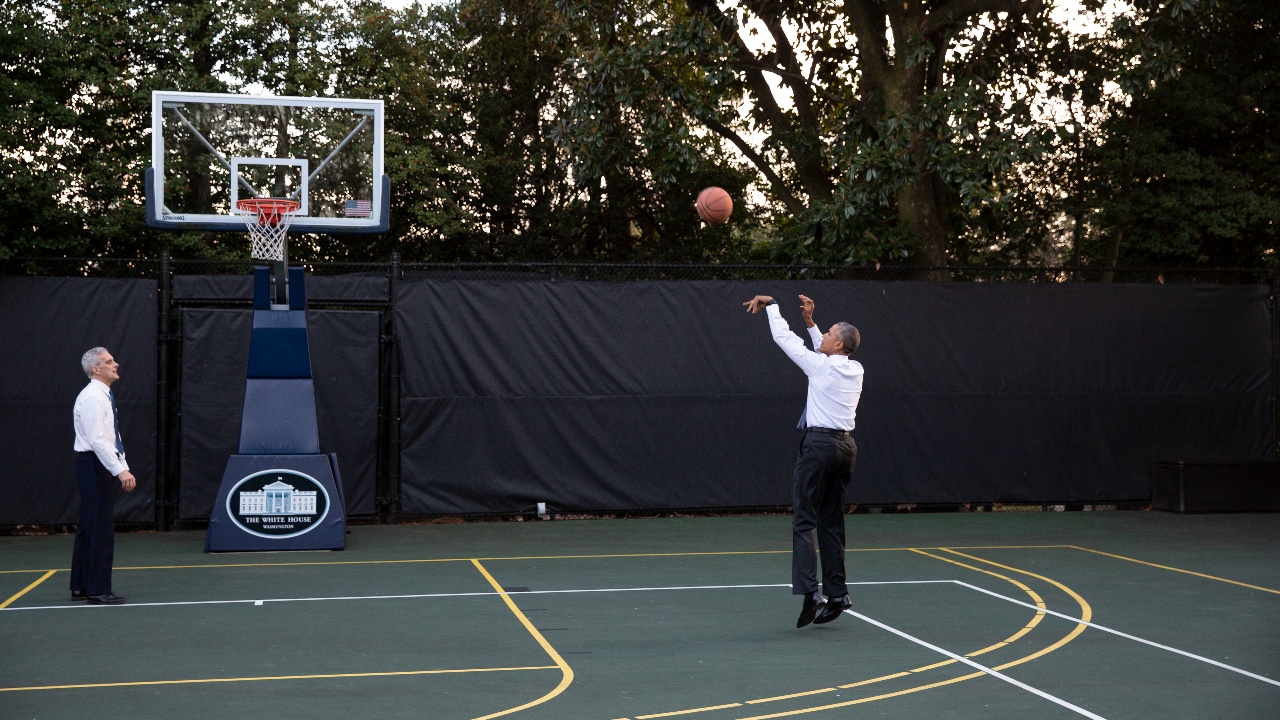When you picture presidential additions to the White House, what comes to mind? Grand ballrooms, sparkling new wings, or perhaps an expensive demolition? For President Barack Obama, the reality was far simpler and much more relatable. The story of his now-famous basketball court isn’t one of extravagant spending or major construction; it’s a tale of a practical, low-cost adaptation that reflects a president’s personal touch on the People’s House.
The narrative around this project has been clouded by misinformation, with some wild figures and misleading claims circulating online. So, let’s clear the air and get into the genuine details of what was actually done, how much it possibly cost, and why this modest court became a memorable part of Obama’s presidency.
You Might Like: The Story of Misty Copeland’s Marriage and Motherhood
A Court for Two Sports: The Simple Conversion
The project didn’t involve building a new structure from the ground up. Instead, President Obama made a clever adjustment to an existing facility. The White House had had a tennis court in place since the 1990s, which President George H.W. Bush had even expanded. Shortly after taking office, Obama had this same court adapted so it could serve a dual purpose: it could still be used for tennis, but it could now also accommodate a full-court game of basketball.
The work was straightforward. The primary changes involved painting new lines onto the existing court surface and installing removable basketball hoops. This smart design meant that with a quick adjustment, the space could seamlessly transition between being a tennis court and a full-sized basketball court. This adaptable space quickly became more than just a recreational spot. It hosted a variety of distinguished guests, from college basketball championship teams to Wounded Warrior players, becoming a venue for community and celebration.
Teddy Roosevelt built the West Wing.
Taft made the Executive Office oval.
FDR added the entire East Wing and included an indoor pool for himself.
Truman gutted the entire White House.
Nixon added a bowling alley.
Obama added a basketball court.
Trump is building a ballroom. pic.twitter.com/OoQQjZVwQ1
— Geiger Capital (@Geiger_Capital) October 20, 2025
President Obama himself was a well-known basketball enthusiast, and he even used the court to help coach his daughter Sasha’s fourth-grade basketball team, the Vipers.
The Price Tag: Separating Fact from Fiction
When it comes to the cost, the most important thing to know is that the conversion was a minimal expense, especially when compared to other presidential renovations. The project was so simple that, as one analysis noted, “It’s hard to find information on exactly how much the renovation cost… given how little had to be changed, the price is likely negligible.”
The idea that Obama spent a significant amount on White House renovations is a common misconception. As one social media fact-check highlighted, a false figure of $370 million sometimes circulates online, but this is misinformation that often conflates the minor court changes with other, unrelated projects. In reality, the most substantial renovation during Obama’s early presidency was a $12 million project to update the White House’s heating and cooling systems (HVAC)—a necessary infrastructure upgrade that was actually approved during the previous Bush administration.
The context of other presidential additions makes the basketball court’s modest cost even clearer. For instance, President Donald Trump later proposed a $250 million, 90,000-square-foot ballroom, a project that involved demolition of the East Wing. In contrast, Obama’s alteration was a surface-level update to an existing athletic facility. As one online commenter aptly put it, “Tennis court was already there. Adding baskets and painting new lines to convert it… Minimal cost, no damage.” The Obama family also chose to pay for their personal redecorating of the living quarters out of their own pockets, rather than using the taxpayer-funded allowance.
The story of President Obama’s basketball court is a refreshing reminder that not everything in politics has to be about massive spending and grand-scale projects. It was a simple, cost-effective adaptation that allowed a president to enjoy his favorite sport and share it with others. The next time you hear about presidential renovations, remember this example—a functional, frugal, and personal touch on America’s most famous home.












